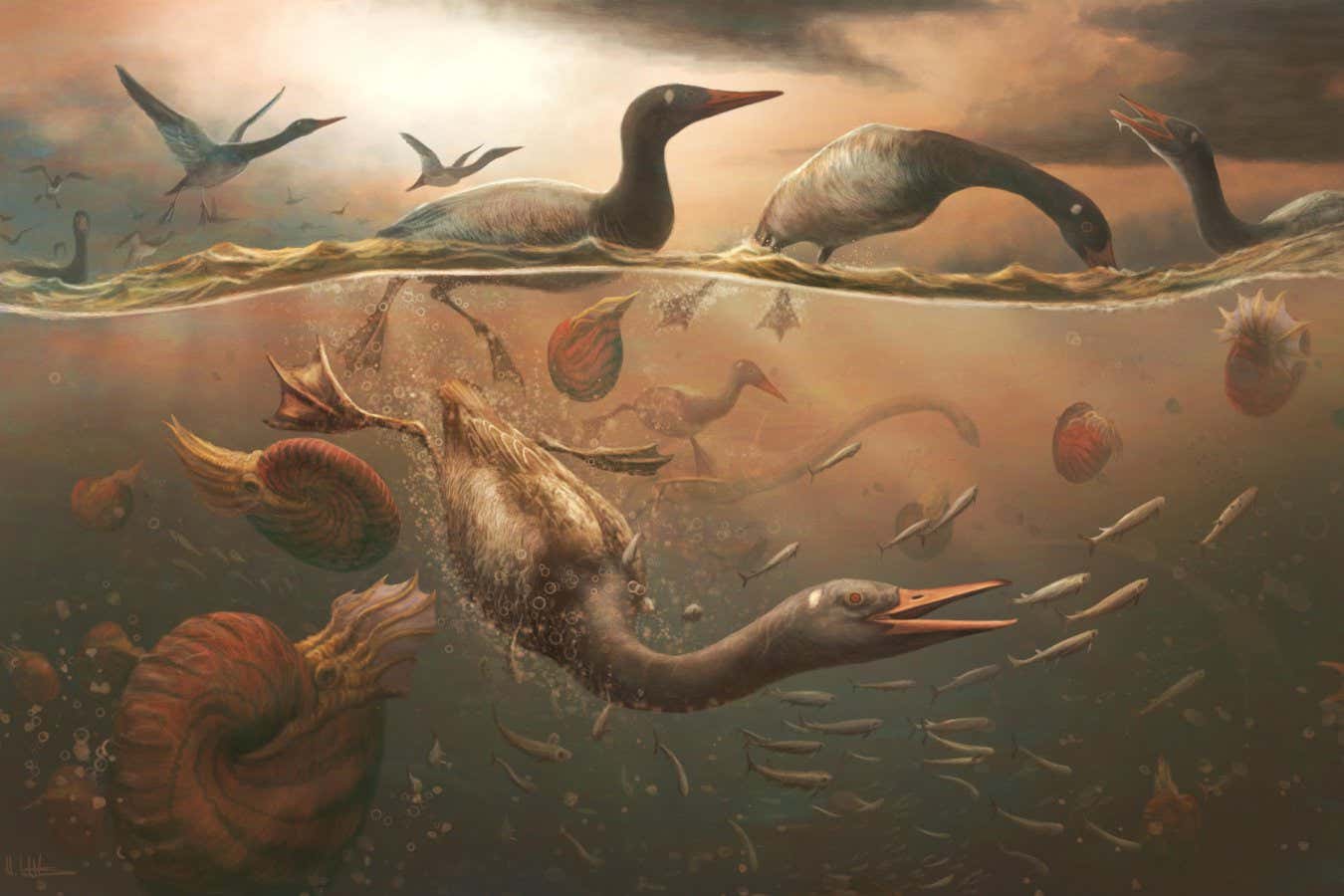A newly analysed fossil skull settles a palaeontological debate over Vegavis iaai, confirming it as a relative of ducks and geese that lived 69 million years ago
By James Woodford
5 February 2025
Vegavis iaai was an ancient relative of ducks and geese, but it dived for fish like grebes or loons
Mark Witton
A 69-million-year-old skull found in Antarctica has been identified as a relative of geese and ducks, making it the oldest known modern bird.
It belongs to a species that was first identified two decades ago named Vegavis iaai, which lived in the late Cretaceous Period alongside the last dinosaurs. But because only fragments of skulls had been found previously, scientists had been unable to agree what kind of bird it was or whether it was instead a bird-like, non-avian dinosaur.
Read more
Largest ever animal may have been Triassic ichthyosaur super-predator
Advertisement
The fossil skull was discovered in 2011 on Vega Island, off the Antarctic Peninsula. However, it was encased in rock so hard that excavators had to spend hundreds of hours chipping away at the surrounding stone before it could be scanned to reveal its internal details.
Patrick O’Connor at Ohio University, who worked on the analysis, says two features of the almost complete skull only ever occur in modern birds. First, the upper beak is primarily comprised of a bone called the premaxilla, while a second bone, the maxilla, is greatly reduced in size and contributes to only a small portion of the bony palate.
Second, in modern birds, the forebrain is massive relative to the rest of the brain; in pre-modern birds and near-bird dinosaurs like Velociraptor, these areas are proportionally much smaller.
